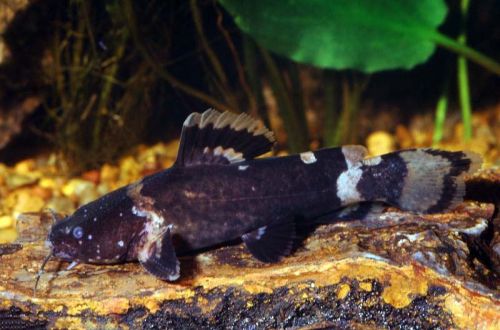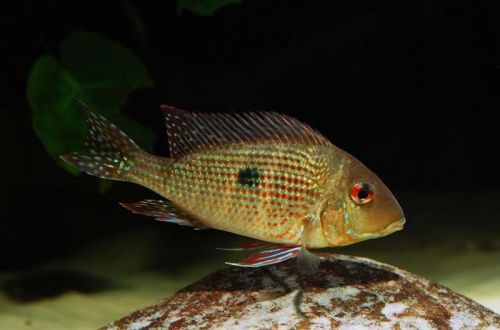
Batrochoglanis
Batrochoglanis, scientific name Batrochoglanis raninus, belongs to the family Pseudopimelodidae (Pseudopimelodidae). The fish is native to South America. Inhabits numerous river systems of the lower Amazon in Guyana and French Guiana. In nature, it is found among silty substrates, flooded snags and hiding in a layer of fallen leaves.

Description
Adults reach a length of up to 20 cm. However, in an aquarium, in most cases, catfish stop growing, remaining about 8–10 cm.
Catfish has a heavy body with short fins, the first rays of which are thickened and are spikes. The caudal fin is rounded.
The color is predominantly dark brown or black with patches of light cream. The tail has more light pigment than the body.
Behavior and Compatibility
Leads a secretive lifestyle, preferring to hide in shelters during daylight hours. Peaceful, gets along well with relatives, but at the same time not too sociable and feels great alone.
Compatible with most other non-aggressive species. It is worth remembering that, due to its omnivorous nature, it can eat smaller fish, fry.
Brief information:
- The volume of the aquarium – from 50 liters.
- Temperature – 25-28°C
- Value pH — 6.0–7.0
- Water hardness – 10–15 dGH
- Substrate type – any
- Lighting – subdued
- Brackish water – no
- Water movement – little or no
- The size of the fish is 8–10 cm.
- Food – any sinking food
- Temperament – peaceful
- Content – alone or in a group
Maintenance and care, arrangement of the aquarium
Considering a sedentary lifestyle for one catfish, an aquarium with a volume of 50 liters or more will be quite enough. Accordingly, a community of several fish of comparable size would require a larger tank.
The design is arbitrary and is selected at the discretion of the aquarist or based on the needs of other fish. The main condition is the presence of shelters. It can be both natural snags, heaps of stones that form caves and grottoes, thickets of plants, and artificial objects. The simplest shelter is fragments of PVC pipes.
For long-term keeping it is important to provide soft, slightly acidic water, although it can successfully adapt to higher pH and dGH values. Responds poorly to overflow. Soft filtration with low water movement is recommended.
Maintenance of the aquarium is standard: weekly replacement of part of the water with fresh water, removal of organic waste, preventive maintenance of equipment, cleaning of glass and design elements.
Food
In nature, the basis of the diet is plant material, small invertebrates. In a home aquarium, it will accept almost all types of popular food in dry, frozen, fresh and live form.
It is worth remembering that in a confined space with a high population density, Batrohoglanis can turn his attention to his smaller neighbors.





